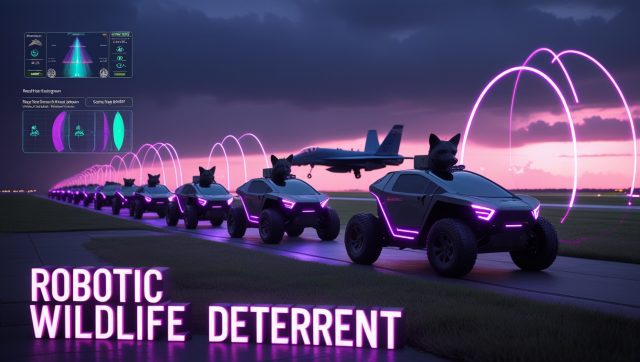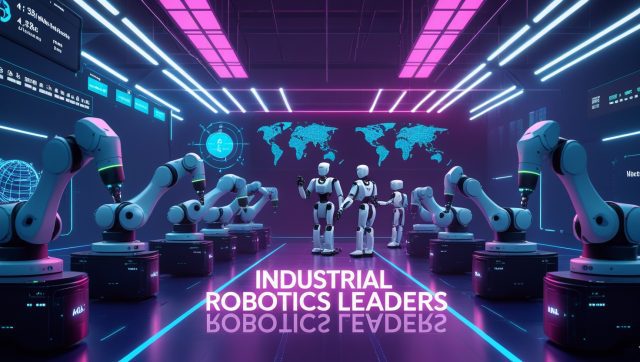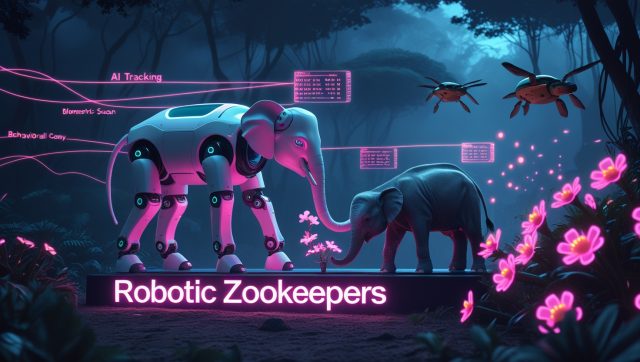When Shaun Ilten faced the impossible task of lining 29 soccer fields in under five days for the 2025 Coachella Valley tournament, human labor alone would have forced event downsizing. His solution? Deploying autonomous field painting robots—GPS-guided machines that completed the job at quadruple human speed. This August 2025 breakthrough epitomizes how autonomous field painters like Turf Tank are disrupting sports turf management. With precision down to 1 centimeter and 50% paint savings, these robots aren’t futuristic concepts—they’re operational at 5,000+ venues worldwide, from Alabama’s Bryant-Denny Stadium to local high schools.
The Technology: GPS, AI, and Centimeter Precision
How It Works
- RTK GPS Navigation: Robots like Turf Tank use real-time kinematic GPS with a portable base station for 1-cm accuracy. Operators input field dimensions via tablet, and the robot autonomously paints complex layouts (hash marks, arcs, logos) in 24-45 minutes per field. This precision is critical for sports like soccer and football, where exact measurements ensure fair play and compliance with regulations, a topic explored further in how AI-driven sports analytics are transforming athletic performance.
- Obstacle Intelligence: Sensors halt operation if bystanders approach, preventing collisions during autonomous mode. This safety feature mirrors advancements in industrial AI safety compliance for robotics, ensuring robots operate reliably around humans.
- Memory Remarking: Once a field’s layout is saved, weekly repainting follows identical paths, ensuring consistency despite weather or turf growth. Such efficiency aligns with broader trends in AI-driven automation transforming industries like retail, where precision and repeatability are key.
Real-World Proof
At the University of Alabama, groundskeepers doubted the robot’s ability to paint 160 football hash marks perfectly. After a demo during lunch, it delivered all marks at exact 4-inch widths, 2-foot lengths, and 60-foot sidelines—convincing skeptics. For a deeper look at how AI ensures precision in other fields, check out Forbes’ article on AI’s role in modern sports technology.
Economic and Labor Impact
Cost Revolution
| Method | Time per Football Field | Labor Needed | Paint Used | Cost |
|---|---|---|---|---|
| Manual | 20 hours | 4 people | 25 gallons | $580 |
| Robot | 2.5 hours | 1 person | 10 gallons | $220 |
Source: Turf Tank data
- ROI: At $50,000 per unit, organizations break even in 12-18 months via labor/paint savings.
- Paint Efficiency: Low-pressure nozzles reduce consumption by 50-60% versus manual methods, slashing costs and environmental impact. This efficiency echoes innovations in sustainable tech solutions for industries, reducing waste while maintaining quality.
Labor Transformation
- Upskilling, Not Replacement: Groundskeepers transition from manual painters to tech operators. As Jason Aldridge (Turf Tank founder) notes: “They go to school to grow grass. Painting was a pain point—our robots handle the ‘icing on the cake’.” This shift reflects trends in workforce evolution, much like how AI is reshaping career pathing to address talent shortages.
- Solving Shortages: Parks departments with stretched staff (e.g., Hurst-Euless-Bedford ISD) deploy robots during worker shortages, maintaining field quality without overtime.
Market Expansion: How Autonomous Field Painting Robots Reach NFL to Neighborhood Fields
Pro/College Adoption: 8 NFL teams, LA Galaxy, and 200+ colleges use robots for stadiums and practice fields.
Grassroots Dominance: 70% of Turf Tank’s clients are high schools and municipal parks. For understaffed youth leagues, robots enable one volunteer to paint 5 fields before lunch.
Global Players: Turf Tank (USA/Denmark), TinyMobileRobots (Denmark), and Swozi (Switzerland) compete on precision features. Turf Tank leads the U.S. with 90% market share.
Ethical and Social Implications
Labor Displacement Fears vs. Reality
While robots eliminate low-skill painting tasks, they create tech-maintenance roles. At Dignity Health Sports Park, staff attrition allowed natural transition—no layoffs occurred as robots augmented existing teams.
Accessibility Divide
Pros: Municipalities save $15,000/year, redirecting funds to equipment or programs.
Cons: Small clubs struggle with upfront costs. Subscription models ($5,000-$15,000/year) now ease entry
.Cultural Resistance
Traditionalists like Ilten still hand-paint LA Galaxy games for “brighter lines,” proving human artistry retains value in elite venues.
Future Trajectory: AI and the 2026 World Cup
- AI Integration: Next-gen robots will use computer vision to detect turf health, adjusting paint pressure to avoid damaged grass.
- Multi-Task Bots: Swiss Swozi’s “Stealth Striper” prototype mows while painting, consolidating maintenance.
- World Cup Catalyst: With North America hosting 2026, FIFA’s demand for flawless pitches will accelerate robot adoption globally.
Beyond Efficiency—Democratizing Perfection
Field painting robots solve more than labor math—they democratize professional-grade fields. A high school in Texas can now achieve line accuracy rivaling NFL stadiums, elevating community sports aesthetics and safety. As Aldridge observed while watching Shark Tank, this innovation modernizes a 2,000-year-old task from the first Olympic lanes. The silent bots roaming pitches symbolize a broader truth: Industrial AI’s deepest impact lies not in flashy humanoids, but in unglamorous tools that liberate human potential.
“One day I painted five fields before lunch. Previously, I’d need a team and a week.”
—Dave Tabler, Venue Manager
Disclaimer: Some claims in this article are based on emerging reports and ongoing discussions. Treat them as part of the bigger picture—not final facts.
Your Take: Autonomous robots like Turf Tank paint fields 4x faster with 50% less paint, solving labor shortages while raising field quality for schools, parks, and pro teams. Ethical concerns exist, but upskilling and subscription models ease adoption. The tech’s real win? Making pro-level fields accessible to all.
Subscribe to our Newsletter for Tomorrow’s Tech Today: Get analysis on AI’s unseen revolutions—from farms to factories. Sign Up Now



